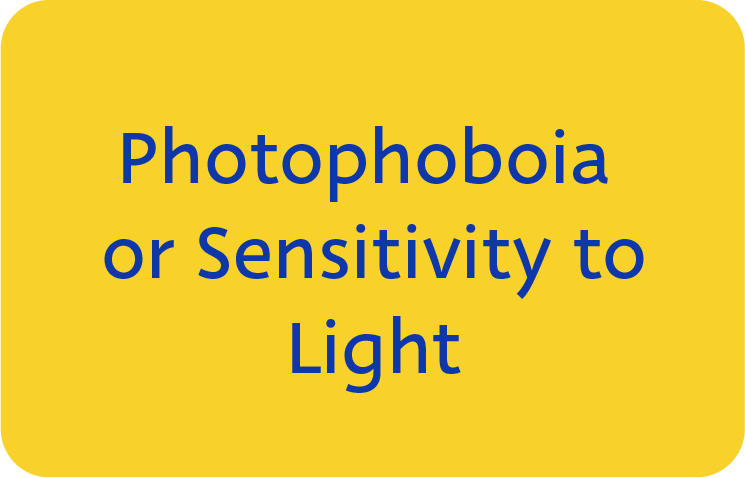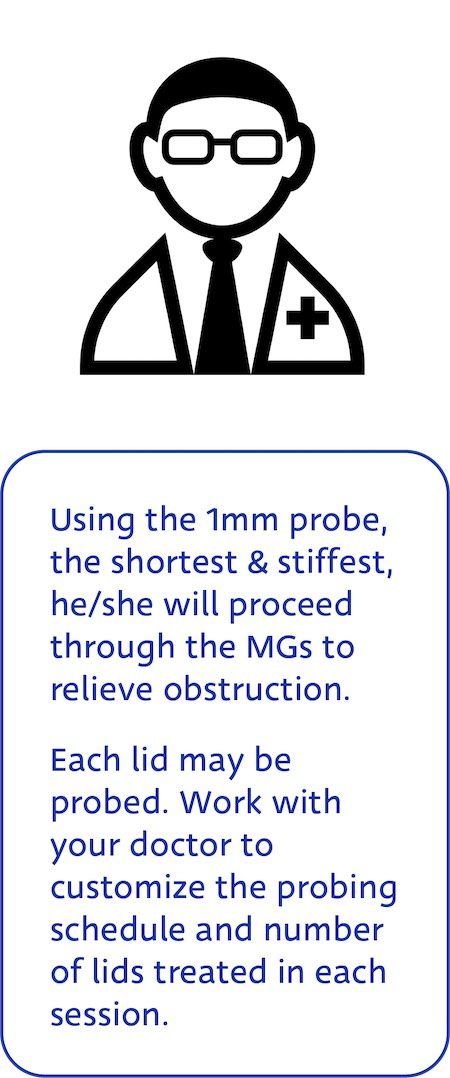Do you suffer from dry eye?
At least 350 million persons worldwide, and in some Asian countries as many as 70% of their population, have Dry Eye. Meibomian Gland Dysfunction (MGD) is a major factor in nearly 90% of cases.1
MGD was recognized as the primary cause of dry eye for the majority of sufferers in 2010, turning the eye care community’s approach to dry eye treatment on its head.
Dry eye affects both physical and mental wellness, and it is essential to receive effective and restorative treatment.
What are Meibomian Glands? Why should they be probed?
With the relatively recent discovery of the importance of Meibomian Glands (MGs) in the maintenance of eye health and their significance in development of dry eye, treatment protocols have shifted rapidly to focus on the oil (meibum) layer in addition to watery (aqueous) tears.
As learning has progressed, the importance of adequate meibum secretion has gained additional attention, and developments have been made to apply heat and pressure to the glands in the aim to melt oil blockages and allow meibum to flow freely once again.
This approach works for some glands, however recent discoveries illuminate a key element of meibum blockages – nonvisible (occult) scarring around gland ducts.
This scarring constricts the duct along the gland, creating resistance inside the duct that blocks adequate oil flow and elevates pressure within the gland. This additional pressure results in lid tenderness and inflammation, as well as gland atrophy.
Scarring may occur at various points along the gland, allowing glands to be partially functional in oil secretion or entirely blocked. This important discovery explains why glands may produce some oil but still not be a healthy gland.
Without clearing the gland of this scar tissue prior to further treatment, this nonvisible problem only progresses further and exacerbates the issue.
What symptoms is MGD associated with?
In 2017, the International Dry Eye Workshop II (DEWS) defined dry eye as “…a multifactorial disease of the ocular surface characterized by a loss of homeostasis of the tear film, and accompanied by ocular symptoms, in which tear film instability and hyperosmolarity, ocular surface inflammation and damage, and neurosensory abnormalities play etiological roles.”
The International Workshop on MGD defined MGD as “A chronic, diffuse abnormality of the meibomian glands, commonly characterized by terminal duct obstruction and/or qualitative/quantitative changes in the glandular secretion. It may result in alteration of the tear film, symptoms of eye irritation, clinically apparent inflammation, and ocular surface disease.”
Dry eye can be episodic, such as when environmental or task-based events result in less blinking and tear instability, or chronic and persisting continuously. Chronic dry eye can result in damage to the ocular surface and further exacerbate dry eye symptoms.
The physical impact of MGD can result in significant social and psychological impacts, leading sufferers to lose their occupations, social relationships, and resulting in significant mental health issues. Further, MGD affects family members and friends, leading to a feeling of helplessness all around.
Working with your eye doctor to craft a treatment plan is essential to adequate dry eye treatment.
Assessing your eyes for co-morbidities, or other diseases, that are contributing to your dry eye allows creation of a comprehensive treatment plan that tackles the root of the problem. Too often, bandaid solutions like eye drops are recommended as the only treatment method, and ignore the various pieces of the puzzle that may underlie your particular dry eye needs.
The 3 key elements of any dry eye diagnosis plan include:
Aqueous tears - sufficient production without excessive evaporation
Meibomian Glands and ductal integrity - adequate quality and quantity of meibum (oil) and health of glands
Ocular surface health - smooth eye surface without degenerative tissue or masses misdirecting tear flow
While MGD is often associated with additional eye care needs that must be assessed, clearing your glands to allow oil flow is a key first step in treatment.
What is Meibomian Gland Probing (MGP)?
In order to relieve constricting scar tissue surrounding your Meibomian glands, your eye doctor will use Maskin® probes for MGP.
this frees your glands, allowing flow of meibum, proven essential for eye health and moisture.
As glands are probed, you may hear popping indicating the breakup of scar tissue surrounding glands and equilibration of pressure inside the gland. This scar tissue squeezes at various points along the gland, and is the essential discovery that probing targets.
Just as a rubber band around a tube prevents expression of contents, scar tissue compresses the MG gland and creates a fixed internal blockage that must be relieved prior to further treatment.
Probing Meibomian Glands is a key element of a dry eye treatment plan. Also, be sure to talk to you doctor about possible co-morbidities (additional conditions or diagnoses contributing to your dry eye).
Without adequate treatment of underlying and co-existing conditions, your Meibomian Glands may once again become impacted by scar tissue with blockage of essential meibum flow.











